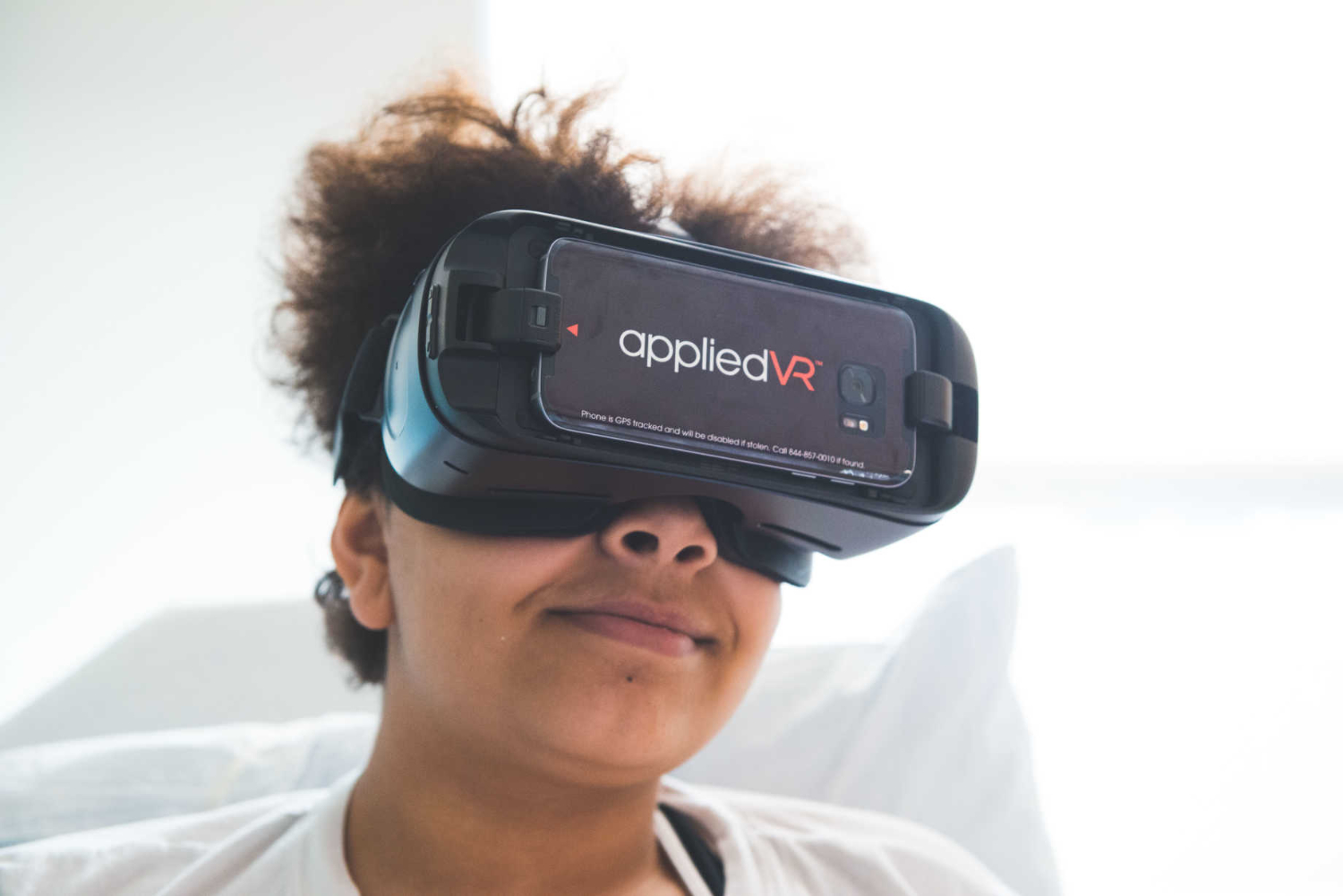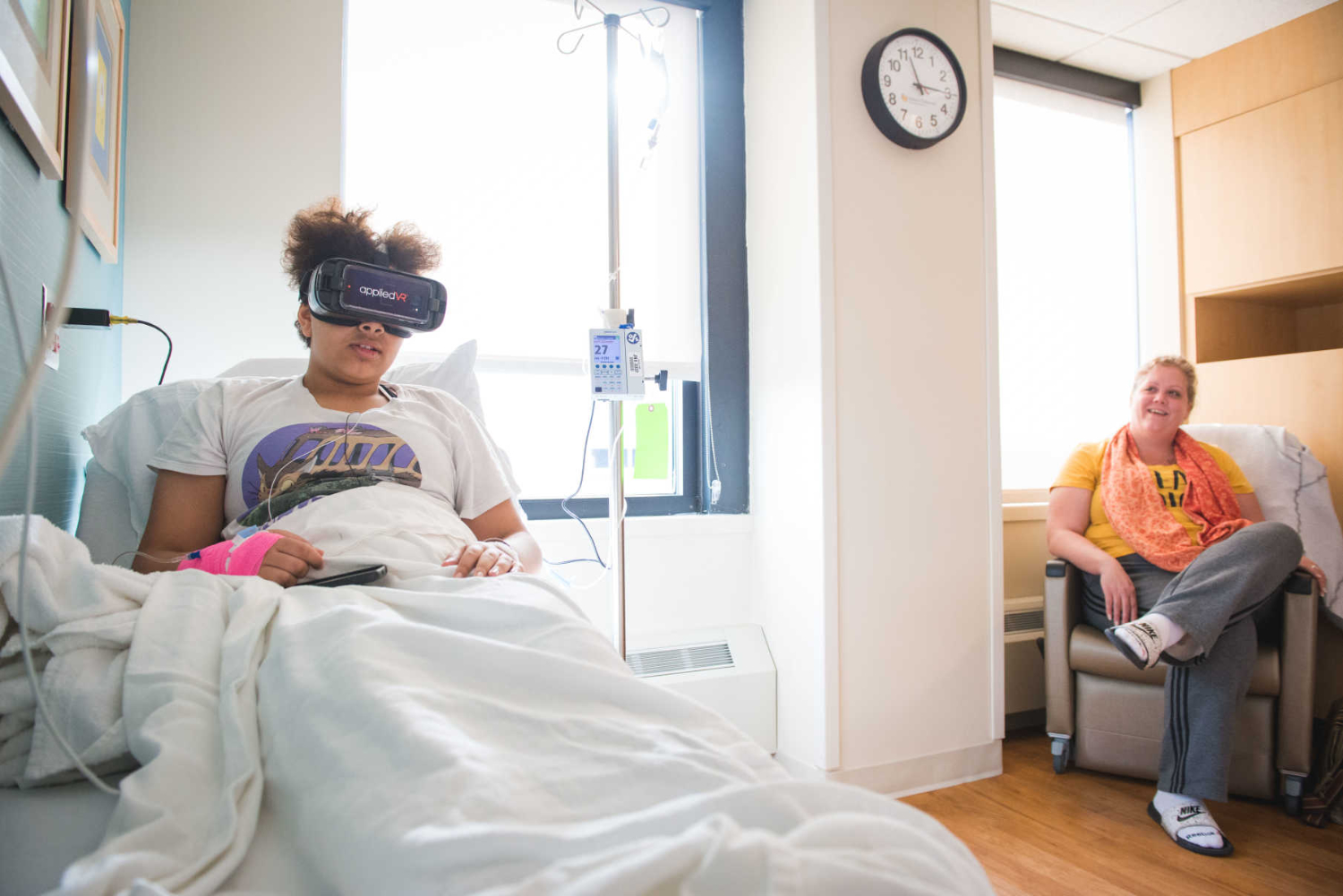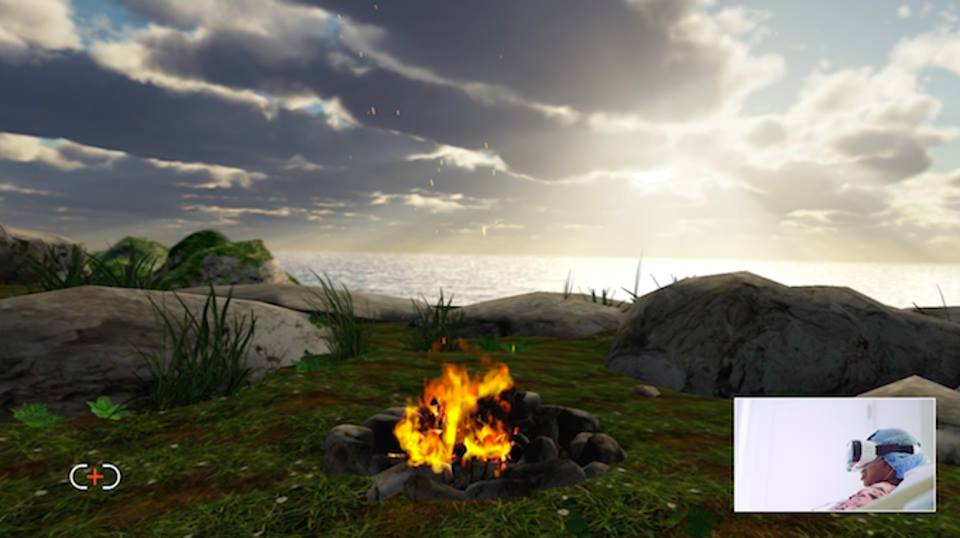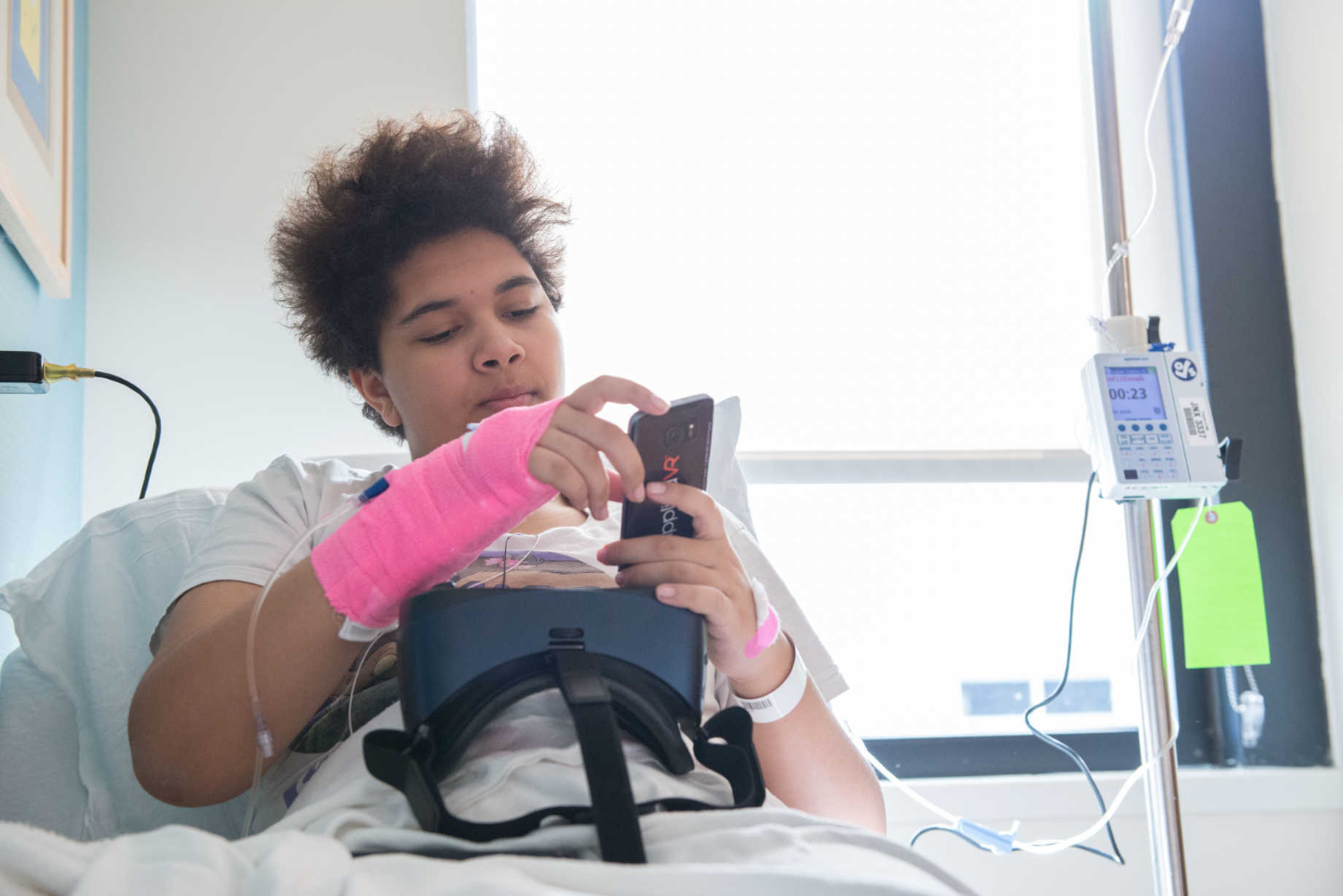
The hospital can be a scary place for anyone, especially a child, and no matter how nice the staff is or how thoughtfully the clinical spaces are designed, it’s usually difficult for a patient to forget they’re in one. At Gillette Children’s, that’s no longer the case.
In the summer of 2017, researchers working in collaboration with Gillette’s Integrative Care Committee received two Virtual Reality (VR) headsets on loan from appliedVR, a Los Angeles-based technology company that designs VR goggles specifically for use in a medical setting.
Child life specialists at Gillette began offering headsets to patients during clinical interventions, and they say that the positive impact of VR was seen almost immediately.
“It’s our goal to make patient care as painless and anxiety-free as possible, so we’re always looking for new methods and treatments that could be practically applied in clinic,” says Chantel Barney, PhD, a clinical scientist involved with the VR initiative at Gillette. “VR is a relatively new field when it comes to medicine, but the use of VR in certain settings has been shown to significantly reduce both pain and anxiety when compared to the traditional standards of care, and we’ve already seen those results in our use of VR at Gillette.”
It’s Not Just Entertainment
Olivia Curtis, 13, began coming to Gillette when she was diagnosed with Juvenile Idiopathic Arthritis (JIA) at age 4. At age 9, Olivia began receiving infusions of Remicade to help mitigate her condition, and unfortunately, her first experience with the infusions didn’t go super well.
“It wasn’t anyone’s fault, they just had trouble finding a good vein for the infusion,” says Jennifer Walton, Olivia’s mother. “Unfortunately, her first impression was difficult to shake. Every time we went in for a subsequent infusion, you could just see Olivia’s fear and anxiety ramping up, and the whole process became more difficult.”
Jennifer says that as Olivia got older things improved slightly, but the infusions were still arduous at times. Luckily, the VR pilot program at Gillette began, and a child life specialist brought a headset to Olivia’s next infusion appointment.
 “We had decent success with iPads and other methods of distraction, but the change with VR was really remarkable,” Jennifer says. “It was like it allowed Olivia to step out of the hospital for a little while. That first time was by far the most pleasant infusion she ever had, so at that point we were sold.”
“We had decent success with iPads and other methods of distraction, but the change with VR was really remarkable,” Jennifer says. “It was like it allowed Olivia to step out of the hospital for a little while. That first time was by far the most pleasant infusion she ever had, so at that point we were sold.”
Expanding the VR Program
While VR has been shown to be incredibly effective in situations like that of Olivia’s, Todd Dalberg, DO, Medical Director of Integrative and Palliative Care and physician lead of the VR program at Gillette says that the practical applications of therapeutic VR could be even more far-reaching.
“Overall, it’s our goal to improve outcomes and maximize benefits for our patients with the least amount of harm. What makes VR compelling as an integrative modality is there’s all the potential for benefit, and very little chance for harm,” Dalberg says.

The software provided by appliedVR allows patients to access over 20 different interactive content modules.
“One of the main reasons we use integrative therapies in the first place is largely rooted in attempting to reduce the adverse side effects from sedative medications and opioids, and technology like VR has already shown the capacity to capture the attention of our patients. This allows them to more fully participate in therapies as well as tolerate procedures to a greater extent. When a child is calm, the feeling is contagious and allows for better quality of care for everyone involved.”
Spurred on by the successful implementation of the VR pilot program, Gillette has expanded the number of VR kits on its main St. Paul campus to 31 headsets, making it one of the largest pediatric VR initiatives in Minnesota. Barney and her team are also in the early stages of researching the use of VR in a pediatric setting, and we'll be providing updates as they make progress.
Those with questions about VR and its implementation at Gillette can contact Chantel Barney.

Do these symptoms sound familiar? Our 30-minute consult appointment could help get answers.
Request an appointment to connect with Gillette providers.
Meet a care team provider, find a location, learn how to get a second opinion, and more.
Gillette kids fuel our mission. You provide the spark. Donate today.
